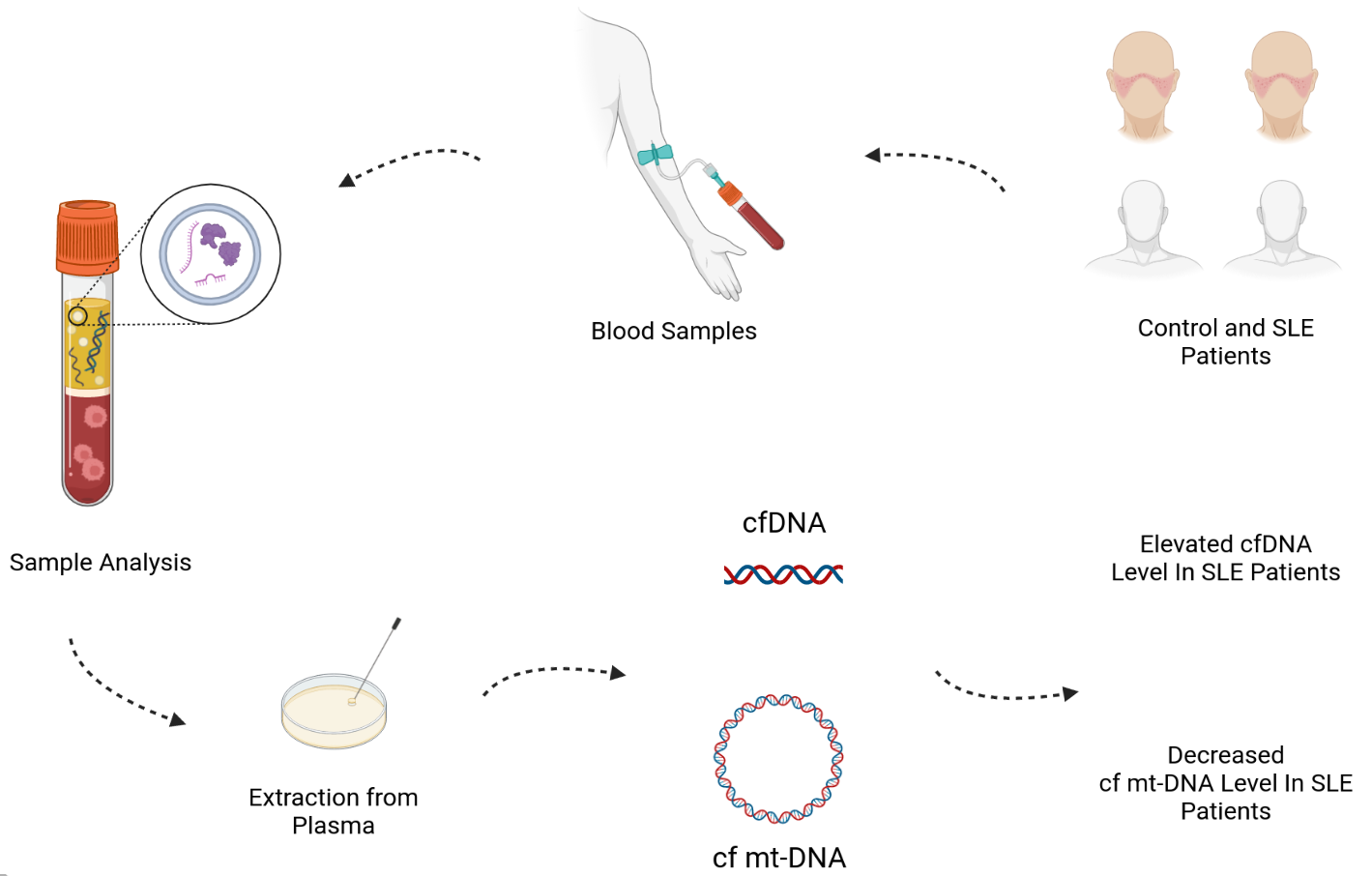A Systematic Review on the Potential of Circulatory Cell-Free DNA in the Diagnosis of Systemic Lupus Erythematosus Patients
Ramin Yousefpour Shahrivar1, Zahra Ahmadi Fakhr2, Zahra Jahanbakhsh3, Fatemeh Karami4
Abstract
Background: Systemic lupus erythematosus (SLE) is one of the frequent autoimmune disorders which is characterized by production of auto-antibodies against different tissues and circulatory DNAs released from apoptotic bodies. Owing to the confusing and delayed diagnosis of SLE, demand for early biomarkers made me to assess the potential of circulatory cell free DNA (cfDNA) in the diagnosis of SLE patients through systematic review of the previously performed studies.
Methods: An advanced literature search was conducted in PubMed, Google Scholar and Embase databases according to the PRISMA guidelines. Searching was included following keywords: [(“SLE” OR “Systemic Lupus Erythematosus” OR “Lupus”)] AND [(“Cell free DNA” OR “Cell- free mitochondrial DNA”)] AND [(“quantity”)]. All the articles since 2016 was included in the present study.
Results: Among ten finally included studies for review, nine articles has approved that cfDNA significantly increases in SLE patients compared to healthy controls. The remained one study demonstrated that higher cfDNA quantity alternatively occurs in circulating microparticles. In contrast, Cell- free mitochondrial DNA (cf mt-DNA) was shown in eight studies to be significantly decreased in SLE patients which unlike cfDNA was negatively correlated with disease severity.
Conclusion: High cfDNA and low cf mt-DNA quantity can be potentially used as biomarkers in early diagnosis of suspicious SLE cases. Further studies are required to shed light on the genetic and epigenetic alteration of cfDNA before and in response to treatment.
Keywords: Systemic lupus erythematosus (SLE) , Cell free DNA, Cell- free mitochondrial DNA, quantity
